During the past month I’ve been cataloguing the administrative records of Austin & Pickersgill Ltd and its two predecessor companies, S.P. Austin & Son Ltd and William Pickersgill & Sons Ltd. These include an interesting set of personnel records, which may be of interest to family historians whose ancestors worked in the Sunderland shipbuilding industry.
The Archives holds records of many shipyards on the River Tyne and the River Wear but these generally include little in the way of personnel records. Those that survive are often wage books, which contain very few personal details and often just relate to the shipyard’s clerical staff, draughtsmen and foremen. The records of Austin Pickersgill and its predecessors are unusual, though, because they contain information about the shipyard workers whose personal details are rarely found in other collections.
The archives of S.P. Austin & Son include a large quantity of personnel records. Of particular note are nine drawers of index cards (TWAM ref. DS.AP/2/9/1-9) containing brief details of men and women employed by the yard from the 1910s to the 1940s. A couple of examples are shown below.
The card for Mrs Emily Bush is part of a small but interesting series in the final index card drawer relating to women who worked in the shipyard during the Second World War. Although the information given on these is slim it is relatively rare for any of these details to survive for the catchers, fitters, heaters, holder ups, joiners, labourers, painters, platers, plumbers, rivetters, red leaders and other employees who worked in the shipyards. Helpfully, the cards are arranged in alphabetical order, which makes it easy to search for an ancestor’s name.
The Austin’s records also include six apprentices wage rate books (TWAM ref. DS.AP/2/10/1-6), covering the years 1924-1964. These are arranged by trade and the information given for each apprentice includes:
- Name
- Date started
- Date of birth
- Details of wages.
There are fewer surviving personnel records for William Pickersgill & Sons Ltd but these do include some interesting items. For example, there are two registers of starters dating from 1930-1939 and 1948-1956 and these include useful personal details such as:
- Name
- Address
- Date of birth
- Date started
- Last employer
- Trade
The information about previous employers is likely to be of particular interest to family historians and also reflects how a significant number of workers moved from one firm to another.
In 1954 S.P. Austin & Son Ltd merged with William Pickersgill & Sons Ltd to create Austin & Pickersgill Ltd. The employee records for the amalgamated company survive pretty well and include details of starters and leavers from the 1950s to the 1980s, although there are some gaps.
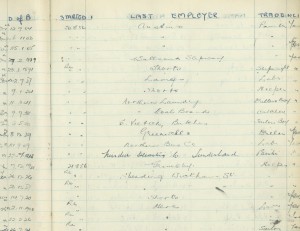
Entries from register of new starters at Southwick yard, showing details of previous employers, August 1956 (TWAM ref. DS.AP/2/16/1)
It’s interesting to note that one of the employees listed above was 67 when he started at the Southwick Yard. We’re approaching a time when many people will have to work longer before retirement but it’s clear that to some of our ancestors this would have been the norm.
There are also twenty yard employees registers (sometimes referred to as ‘hands on books’) for the Southwick Yard. In the yard employees registers the workers are grouped by trade (in order of board number). A separate register was kept each year and these include names and addresses and also give dates of leaving and reasons for leaving, where applicable.
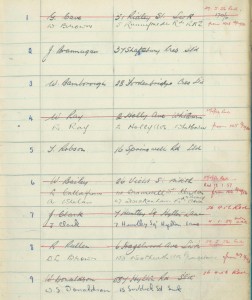
Details of shipwrights at Southwick yard, from a yard employees register for 1956-1957 (TWAM ref. DS.AP/2/23/2)
Access is restricted to these registers because some entries contain sensitive personal information about dismissals. An example of such an entry is given below.

Note regarding the dismissal of a shipwright, from a yard employees register for 1956-1957 (TWAM ref. DS.AP/2/23/2)
Even though direct access is not available to leavers registers and yard employees registers it is possibly to request searches of them by the Archives staff. These searches are carried out through our paid research service and details of this can be found on our webpages.
Colin and have both recently started working on the records of William Doxford & Sons Ltd and I look forward to reporting more exciting discoveries next month.
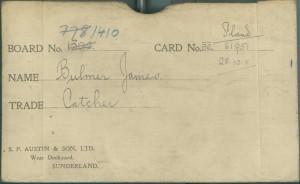
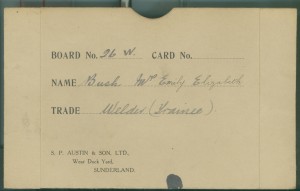
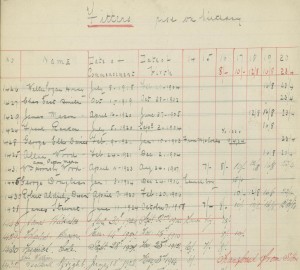
60 Responses to Interesting personnel records uncovered by the Sunderland Shipbuilding Archives project